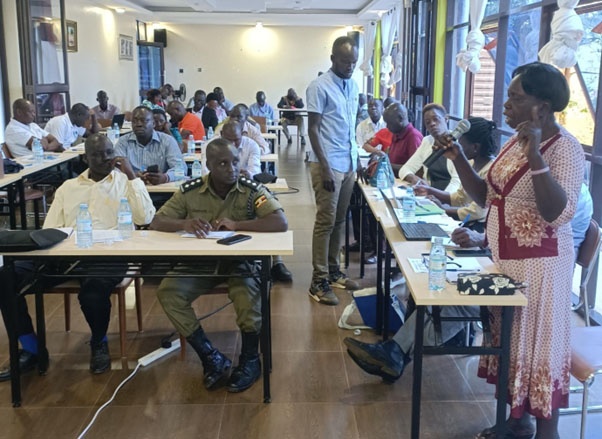
Karamoja | 6 December 2022: The Office of the United Nations High Commissioner for Human Rights (OHCHR) in Uganda, together with Uganda Human Rights Commission (UHRC), Resource Rights Africa (RRA) and Advocates for Natural Resources and Development, organized a workshop to disseminate findings of the monitoring work on child labour. The joint monitoring mission was conducted in October – November 2022, covering 13 mining sites in five districts – Abim, Amudat, Kaabong, Moroto and Nakapiripirit.
The workshop was designed to highlight and raise awareness on the inhumane conditions and grave violations of the rights of children involved in mining and enhance coordination and collaboration among stakeholders through the development of joint actions to address rising practice of child labour in mining. Elimination of child labour is envisaged by the Children’s Rights and Business Principles and integrated in the Uganda National Action Plan on Business and Human Rights. Forty-six representatives (29 men and 17 women) from local government, non-governmental organizations, community mining associations, and Child and Family Protection Unit and Mineral Protection Unit of the Police.
The monitoring mission exposed the reality and prevalence of child labour and hazards depriving children an opportunity for growth and enjoyment of human rights in mining areas. Many vulnerable and orphan children, for instance 78 children aged between six and 17 (of whom 35 girls and 43 boys) in the mining sites of Lopedo, Geregere/Angolebwal and Chewara, look for work in the mines for survival. Multiple factors including poverty, limited livelihood options and growth for child headed households, lack of adequate support/assistance to orphan and child-lead households as well as COVID-19 have compelled them to engage in diverse types of work at mining sites. This is aggravated by inadequate social protection for children and limited interventions by local governments to minimize child labour in mining sector.
Consequently, children are predisposed to various health and safety risks as they work for long hours (over 11 hours) under the scotching sun and paid low wages (e.g., between 1,000 - 5,000 UGX per day) without appropriate equipment. Some children face serious risks at collapsing into pits or suffering physical injuries from other accidents. For instance, three child /juvenile miners lost their lives at Nakapel, Kokano Chewara mining sites in 2022.
The discussion also reminded the local government of its human rights obligations under existing national legal and policy frameworks including the new Mining and Minerals Act to monitor/inspect and reprimand mining license holders, businesses or employers engaging in child labour.
Acknowledging the reality and gravity of child labour as an extreme form of child abuse and violence that needed urgent action, participants recommended sharing the findings of the monitoring mission and the adverse impact of child labour on the enjoyment of their rights with relevant communities. The representatives of the local government also agreed to assess the current state of child labour in a comprehensive manner including increased inspection and monitoring of mining sites and collection of data on children working and living in the mining areas to guide more focused programming.
The participants appreciated the initiative of the Office as the workshop enriched and deepened their insights on the current circumstances underlying child labour in mining industry. The Office will continue monitoring the situation and advocating for the implementation of key recommendations in coordination with relevant stakeholders throughout 2023.